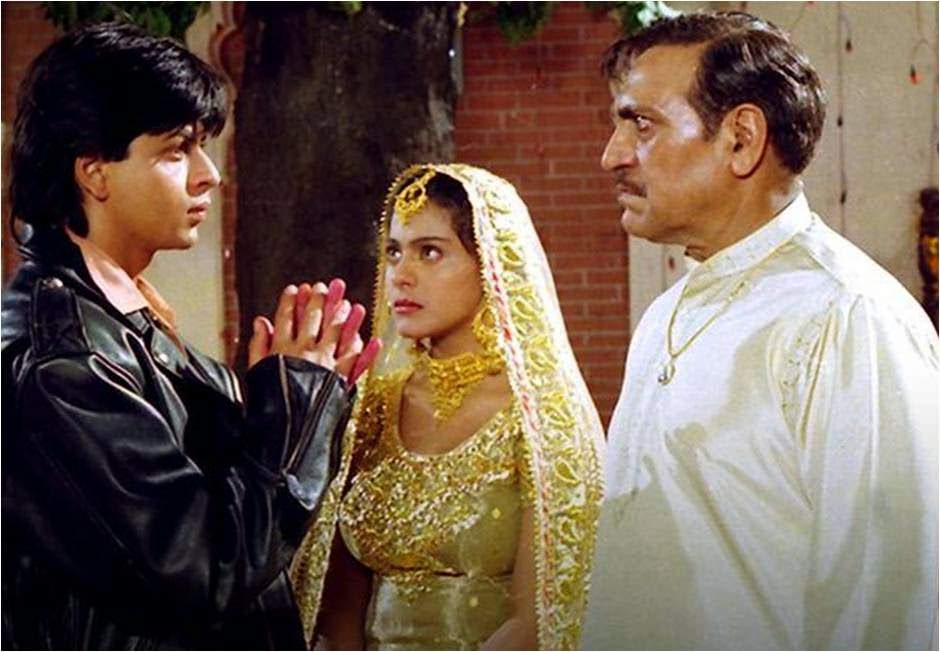Posted by Sumair Nizamuddin
Bollywood has been a major reference point in portraying South Asian culture and Society. Bollywood has taken stands for auxiliary aspects of film production including music, dance, hairstyles, costumes, and cinematography. The capitalist tools to market films, continued racism and classism along with the caste system, and the portrayal of women in the Bollywood films reinforce the prevailing and new stereotypes in a very rigid and heterosexual fashion.
Mainstream ideas such as ‘portraying fair skin as an ultimate goal’ in a predominantly brown-skinned nation spread stereotypes and glorify the notions of gender inequality within the industry as well as the broader society where Bollywood impacts the most.
Patriarchal structures and discriminatory films
Besides entertainment, Bollywood films reflect society and culture to make them relatable to the audience, hence successful at the box office. The stereotypical and biased representation of genders is shown in a number of ways including male gaze, less screen time and representation, and fewer dialogues of one gender under other.
Most action movies of Bollywood are male-oriented. Male characters are shown powerful, highly masculine, and responsible for the safety of female characters while female characters are shown distressed, vulnerable, powerless, and dependent on male characters.
In 2008, Bollywood released a film Ghajni, where Sunita and Kalpana were the two female leads. Regardless of more than one female lead, it was still a male-driven film. This film also showed a hyper-masculine character of Aamir Khan (as Sanjay), presented as an aggressive character in the film.

Image Credit: YouTube
Besides the portrayal of female characters as powerless, women are also shown as carriers of tradition. Films like Kuch Kuch Hota hai suggest that traditional women are more pleasing to men. In Kuch Kuch Hota Hai, Anjali as a college student is Rahul’s friend, outspoken, and a good sportsperson.

Image Credit: filmysasi
However, when they become older and meet, she is portrayed more traditional, caring, and shy. At that point, Rahul becomes romantically interested in her. Tina, on the other hand, is presented as a ‘modern’ woman. However, later she proves her ‘Indianness’ by singing a Hindu traditional religious prayer that shocks Rahul and his college mates. It shows how to be more ‘Indian’, a woman needs to uphold religious and cultural traditions.

Image Credit: Filmibeat
While Rahul – a man – was never questioned on his dressing. A similar notion of women as ‘carriers of traditions’ is shown in the film Chennai Express where the female lead experiences pressure from her father to marry the man her father wishes because he will get power over other villages nearby. She becomes an object of trade and barter. Shahrukh Khan, the male lead, falls in love with her when she convinces him to fulfil his “traditional” duties of flowing the ashes of his grandfather in the holy river.
Objectification of women and item songs
The increasing popularity of the item songs is used as a powerful apparatus to market the film. However, along with marketing, they also portray the feminine sexual desires through the articulation of female bodies. By hyper-sexualizing female dancers, their bodies are showcased as erotic and sexual fantasies, promoting male gaze.
Often times, item songs are hardly related to the plot of the film. Thus, the capitalistic logic of objectifying bodies to publicize films in the global market is visible in the item songs. The stereotypical representation of women in item songs shows female bodies as objects for men. Item songs also portray ‘ideal’ images of women and promote false ideas of how females should look like, obsessing them with thin slim figures with enormous breasts and buttocks.
Since the 21st century, Bollywood item songs have gained popularity in all corners of the world. Actresses like Malaika Arora Khan and Yana Gupta have reached new heights of popularity through their item songs. Katrina Kaif performed an item song in her film Tees Maar Khan, which was not directly related to the plot of the movie. The item songs also use dialogues that contain sexual connotations, reflecting women’s inferiority.

Image Credit: Skjbollywood News
For example, Kareena Kapoor, who performed an item song in Ra-One, used the name Chamak Challo that means “arrogant but easily accessible woman”, expressing subordination, ‘womanliness’ and ‘feminine sexual desires’ of females. Such films aim for the maximization of profits by using female bodies as commodities, objectifying them to attract an audience in the global neo-liberal economy.
Also Read: 10 Posters That Show How Bollywood Reinforces Gender Stereotypes
Representation of diverse genders and sexualities in Bollywood films
Beside portraying women as inferior, Hijras in Bollywood films are the focus of fun and comic relief. Hijras are shown caricatures and poor who beg and dance on occasions, setting a reductionist and stereotypical image of Hijras.
The film Nayak has a short scene where the word chakka is used to ridicule a Hijra. Similarly, in the film Masti, a transwoman Ms Saxena kisses Rohit. Rohit did not know that Saxena is a transwoman. However, when he sees her urinating in a standing position, he rushes to the restroom to clean his mouth. This scene portrays the queerphobia and reaffirms the “heteronormative masculinity” that the actor has.

Image Credit: NDTV Movies
Some films also show male actors, cross-dressing themselves to escape out from unwanted conditions or to add comic scenes in the film.
Beside transphobia, some of the Bollywood films also promote homophobia and misrepresent gay and lesbian identities. The films portray negative stereotypes about gays and lesbians within this conservative society. Society has constructed gender binaries and through films, these essentialist ideas are promoted, describing an unequal socio-political power relation.
Deepa Mehta’s film Fire is considered a cultural landmark in the history of Bollywood film industry for presenting a taboo topic first time in the society. Sita and Radha’s homosexual relationship is contrasted with Ashok’s asceticism, Jatin’s extramarital affair, and servant Mundu’s masturbation.

Image Credit: Forums
However, the film depicts a false myth that homosexuality is an alternative for the one who is not satisfied with their heterosexual relationship. Further, the film represents Sita as masculine and Radha as feminine, perpetuating the negative stereotype of butch-femme roles within homosexual relationships.
Bollywood films also misrepresent gay identities by either portraying negative stereotypes or promoting homophobia. In the film Kal Ho Na Ho, the homophobic Kanta Behen interpreted Shahrukh Khan and Saif Ali Khan as a gay couple, who were in the same bed. Kanta Behen then observes a ‘gay pattern’ in their friendship and gets anxious about it. Such scenes are used to create comedy within the film. Further, Shahrukh Khan and Saif Ali Khan repeat this act to produce laughter at a Filmfare event.

Image Credit: Bollyspice
In another Bollywood film Dostana, two main lead actors Abhishek Bachchan and John Abraham pretend themselves as a gay couple in order to live in the house owned by Priyanka Chopra. John is shown masculine and Abhishek as effeminate, perpetuating negative myths about gay relationships.
The gay characters are portrayed as clown-like creatures who become the point of comedy throughout the film. The song Maa da laadla bigad gaya (“the son has been spoilt”) shows that being gay means being spoilt. John and Abhishek both develop an attraction towards Priyanka and gets jealous of Priyanka’s own boyfriend. Both the male leads use gay identity as a ‘tool’ to live in Priyanka’s house and indicate that only heterosexuality is normal while other sexualities are unnatural.

Image Credit: Pinterest
The unfair representation of one gender under other, the objectification of women, discrimination, and misrepresentation of the LGBTQIA+ community are common in a number of Bollywood films. Gender inequality that exists in Bollywood industry and films impact the viewers, promoting inequality and discrimination within society.
Also Read: Dear Bollywood, When Will You Cater To The Female Gaze?
Sumair Nizamuddin is studying Social Development and Policy from Habib University, Karachi. His primary areas of interest are post-colonialism, intersectionality, feminism, and Muslim culture. He is also a Co-Founder of The Open Discussion Forum, Pakistan. He can be followed on Facebook and LinkedIn.
Featured Image Credit: BriskPost
About the author(s)
Guest Writers are writers who occasionally write on FII.





When you are seeing things of past, they will look different than they were meant to be. You’d be surprised to find racial undertones even in Mickey Mouse and Tom and Jerry.
Also, there’s nothing wrong with sexuality. This is still tame compared to the antics of Madonna back in the 80s. She would make videos about having sex with priests, abortion, virginity and what not. I guess you have never seen Katy Perry or Nicki Minaj.
Your inner femmephobia is also noticeable. While there’s nothing wrong with heteronormative people, bashing femme men and masc women is a very evil thing. The LGBT community already has a problem with femmephobia and you want to increase that?
We observed and put together something recently-https://www.linkedin.com/pulse/unequal-women-bollywood-shalini-rawla/